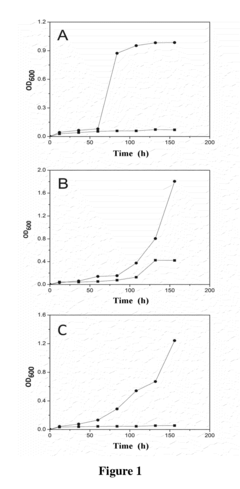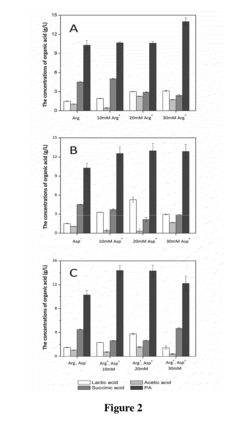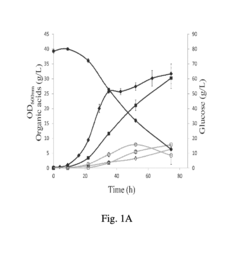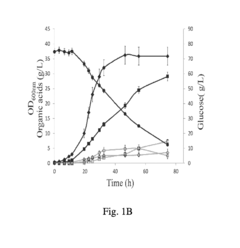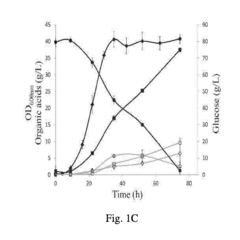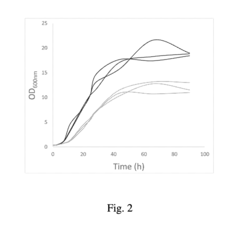Exploring Propionic Acid's Potential in Marine Ecosystems
JUL 3, 20259 MIN READ
Generate Your Research Report Instantly with AI Agent
Patsnap Eureka helps you evaluate technical feasibility & market potential.
Propionic Acid in Marine Ecosystems: Background and Objectives
Propionic acid, a short-chain fatty acid, has garnered increasing attention in marine ecosystems due to its potential ecological and biotechnological significance. The exploration of this compound's role in marine environments represents a convergence of microbiology, oceanography, and biochemistry, offering new insights into marine carbon cycling and potential applications in various industries.
The historical context of propionic acid research in marine settings dates back to the mid-20th century, with early studies focusing on its presence in sediments and its role in anaerobic decomposition processes. However, recent advancements in analytical techniques and a growing interest in marine microbiomes have led to a renaissance in propionic acid research within marine ecosystems.
The primary objective of current research efforts is to elucidate the multifaceted roles of propionic acid in marine environments. This includes understanding its production pathways, distribution patterns, and interactions with marine organisms. Researchers aim to quantify propionic acid concentrations across different marine habitats, from coastal waters to deep-sea environments, and to identify the key microbial players involved in its production and consumption.
Another critical goal is to investigate the potential of propionic acid as a biomarker for specific marine processes or ecosystem health. This could provide valuable insights into carbon cycling, microbial community dynamics, and overall marine ecosystem functioning. Additionally, there is growing interest in exploring the biotechnological applications of marine-derived propionic acid, particularly in the fields of aquaculture, biofuel production, and pharmaceutical development.
The technological evolution in this field has been marked by significant improvements in detection and quantification methods. From traditional gas chromatography to advanced mass spectrometry techniques, the ability to accurately measure propionic acid in complex marine matrices has greatly enhanced our understanding of its distribution and dynamics.
As research progresses, there is an emerging focus on the potential role of propionic acid in climate change mitigation strategies. Some studies suggest that manipulating propionic acid production in marine environments could influence carbon sequestration rates, opening up new avenues for marine-based climate solutions.
In conclusion, the exploration of propionic acid's potential in marine ecosystems represents a frontier in marine science, with implications spanning from fundamental ecological understanding to practical applications in biotechnology and environmental management. The ongoing research in this field promises to unveil new insights into marine biochemistry and offer innovative solutions to global challenges.
The historical context of propionic acid research in marine settings dates back to the mid-20th century, with early studies focusing on its presence in sediments and its role in anaerobic decomposition processes. However, recent advancements in analytical techniques and a growing interest in marine microbiomes have led to a renaissance in propionic acid research within marine ecosystems.
The primary objective of current research efforts is to elucidate the multifaceted roles of propionic acid in marine environments. This includes understanding its production pathways, distribution patterns, and interactions with marine organisms. Researchers aim to quantify propionic acid concentrations across different marine habitats, from coastal waters to deep-sea environments, and to identify the key microbial players involved in its production and consumption.
Another critical goal is to investigate the potential of propionic acid as a biomarker for specific marine processes or ecosystem health. This could provide valuable insights into carbon cycling, microbial community dynamics, and overall marine ecosystem functioning. Additionally, there is growing interest in exploring the biotechnological applications of marine-derived propionic acid, particularly in the fields of aquaculture, biofuel production, and pharmaceutical development.
The technological evolution in this field has been marked by significant improvements in detection and quantification methods. From traditional gas chromatography to advanced mass spectrometry techniques, the ability to accurately measure propionic acid in complex marine matrices has greatly enhanced our understanding of its distribution and dynamics.
As research progresses, there is an emerging focus on the potential role of propionic acid in climate change mitigation strategies. Some studies suggest that manipulating propionic acid production in marine environments could influence carbon sequestration rates, opening up new avenues for marine-based climate solutions.
In conclusion, the exploration of propionic acid's potential in marine ecosystems represents a frontier in marine science, with implications spanning from fundamental ecological understanding to practical applications in biotechnology and environmental management. The ongoing research in this field promises to unveil new insights into marine biochemistry and offer innovative solutions to global challenges.
Market Analysis for Marine Ecosystem Applications
The market for propionic acid applications in marine ecosystems is experiencing significant growth, driven by increasing awareness of environmental sustainability and the need for eco-friendly solutions in aquaculture and marine biotechnology. The global aquaculture market, a key sector for propionic acid applications, is projected to reach $245 billion by 2027, growing at a CAGR of 7.2% from 2020 to 2027.
Propionic acid's potential in marine ecosystems spans several key areas. In aquaculture, it serves as an effective preservative for fish feed, extending shelf life and reducing spoilage. This application is particularly crucial as the aquaculture industry expands to meet growing global seafood demand. The fish feed additives market, where propionic acid plays a significant role, is expected to grow at a CAGR of 5.8% from 2021 to 2026.
Another promising market for propionic acid in marine ecosystems is its use as an algicide and fungicide in aquatic environments. With increasing concerns about harmful algal blooms and their impact on marine life and water quality, the demand for effective, environmentally friendly algicides is rising. The global algaecides market is forecasted to reach $3.6 billion by 2025, growing at a CAGR of 6.3% from 2020 to 2025.
In marine biotechnology, propionic acid shows potential as a precursor for biodegradable plastics and as a building block for various bio-based chemicals. This aligns with the growing trend towards sustainable materials in marine applications. The marine biotechnology market is expected to reach $6.4 billion by 2025, growing at a CAGR of 8.2% from 2020 to 2025.
Geographically, Asia-Pacific dominates the market for propionic acid applications in marine ecosystems, driven by its large aquaculture industry and increasing adoption of sustainable practices. North America and Europe follow, with growing investments in marine biotechnology and stringent regulations promoting eco-friendly solutions in marine environments.
Key market players in this sector include BASF SE, Dow Inc., and Eastman Chemical Company, who are investing in research and development to expand propionic acid applications in marine ecosystems. Start-ups and research institutions are also contributing to market growth through innovative applications and formulations.
Challenges in the market include regulatory hurdles, particularly concerning the use of chemicals in sensitive marine environments, and competition from alternative products. However, the increasing focus on sustainable aquaculture practices and the growing demand for bio-based products in marine applications present significant opportunities for propionic acid market expansion in marine ecosystems.
Propionic acid's potential in marine ecosystems spans several key areas. In aquaculture, it serves as an effective preservative for fish feed, extending shelf life and reducing spoilage. This application is particularly crucial as the aquaculture industry expands to meet growing global seafood demand. The fish feed additives market, where propionic acid plays a significant role, is expected to grow at a CAGR of 5.8% from 2021 to 2026.
Another promising market for propionic acid in marine ecosystems is its use as an algicide and fungicide in aquatic environments. With increasing concerns about harmful algal blooms and their impact on marine life and water quality, the demand for effective, environmentally friendly algicides is rising. The global algaecides market is forecasted to reach $3.6 billion by 2025, growing at a CAGR of 6.3% from 2020 to 2025.
In marine biotechnology, propionic acid shows potential as a precursor for biodegradable plastics and as a building block for various bio-based chemicals. This aligns with the growing trend towards sustainable materials in marine applications. The marine biotechnology market is expected to reach $6.4 billion by 2025, growing at a CAGR of 8.2% from 2020 to 2025.
Geographically, Asia-Pacific dominates the market for propionic acid applications in marine ecosystems, driven by its large aquaculture industry and increasing adoption of sustainable practices. North America and Europe follow, with growing investments in marine biotechnology and stringent regulations promoting eco-friendly solutions in marine environments.
Key market players in this sector include BASF SE, Dow Inc., and Eastman Chemical Company, who are investing in research and development to expand propionic acid applications in marine ecosystems. Start-ups and research institutions are also contributing to market growth through innovative applications and formulations.
Challenges in the market include regulatory hurdles, particularly concerning the use of chemicals in sensitive marine environments, and competition from alternative products. However, the increasing focus on sustainable aquaculture practices and the growing demand for bio-based products in marine applications present significant opportunities for propionic acid market expansion in marine ecosystems.
Current State and Challenges in Marine Propionic Acid Research
The current state of marine propionic acid research is characterized by a growing interest in its potential applications and challenges in implementation. Propionic acid, a short-chain fatty acid, has been identified as a promising compound for various marine ecosystem applications, including aquaculture, biofuel production, and environmental remediation.
In aquaculture, propionic acid has shown potential as a feed additive to improve fish health and growth. Recent studies have demonstrated its efficacy in enhancing disease resistance and promoting gut health in various aquatic species. However, challenges remain in optimizing dosage and delivery methods to ensure maximum benefits without compromising water quality or fish welfare.
The use of propionic acid in marine biofuel production is an emerging area of research. Its potential as a precursor for high-value chemicals and biofuels has attracted attention from both academia and industry. Current efforts focus on developing efficient microbial strains and bioprocessing techniques to convert marine biomass into propionic acid. Despite promising results, scaling up production to commercially viable levels remains a significant challenge.
Environmental applications of propionic acid in marine ecosystems are also being explored. Its ability to inhibit harmful algal blooms and reduce methane emissions from marine sediments has been demonstrated in laboratory settings. However, translating these findings to real-world marine environments presents complex challenges, including potential ecological impacts and regulatory hurdles.
One of the primary challenges in marine propionic acid research is the limited understanding of its behavior and fate in complex marine ecosystems. The interactions between propionic acid and various marine organisms, as well as its impact on biogeochemical cycles, require further investigation. Additionally, the development of robust analytical methods for detecting and quantifying propionic acid in seawater and marine sediments is crucial for advancing research in this field.
Another significant challenge is the economic viability of large-scale propionic acid production and application in marine settings. Current production methods, primarily based on petrochemical processes, are not sustainable for marine applications. Developing cost-effective and environmentally friendly production methods from marine resources is essential for realizing the full potential of propionic acid in marine ecosystems.
Regulatory and environmental concerns also pose challenges to the widespread adoption of propionic acid in marine applications. Ensuring the safety and environmental compatibility of propionic acid-based products and processes is crucial. This requires comprehensive toxicological studies and environmental impact assessments, which are currently limited in the marine context.
In aquaculture, propionic acid has shown potential as a feed additive to improve fish health and growth. Recent studies have demonstrated its efficacy in enhancing disease resistance and promoting gut health in various aquatic species. However, challenges remain in optimizing dosage and delivery methods to ensure maximum benefits without compromising water quality or fish welfare.
The use of propionic acid in marine biofuel production is an emerging area of research. Its potential as a precursor for high-value chemicals and biofuels has attracted attention from both academia and industry. Current efforts focus on developing efficient microbial strains and bioprocessing techniques to convert marine biomass into propionic acid. Despite promising results, scaling up production to commercially viable levels remains a significant challenge.
Environmental applications of propionic acid in marine ecosystems are also being explored. Its ability to inhibit harmful algal blooms and reduce methane emissions from marine sediments has been demonstrated in laboratory settings. However, translating these findings to real-world marine environments presents complex challenges, including potential ecological impacts and regulatory hurdles.
One of the primary challenges in marine propionic acid research is the limited understanding of its behavior and fate in complex marine ecosystems. The interactions between propionic acid and various marine organisms, as well as its impact on biogeochemical cycles, require further investigation. Additionally, the development of robust analytical methods for detecting and quantifying propionic acid in seawater and marine sediments is crucial for advancing research in this field.
Another significant challenge is the economic viability of large-scale propionic acid production and application in marine settings. Current production methods, primarily based on petrochemical processes, are not sustainable for marine applications. Developing cost-effective and environmentally friendly production methods from marine resources is essential for realizing the full potential of propionic acid in marine ecosystems.
Regulatory and environmental concerns also pose challenges to the widespread adoption of propionic acid in marine applications. Ensuring the safety and environmental compatibility of propionic acid-based products and processes is crucial. This requires comprehensive toxicological studies and environmental impact assessments, which are currently limited in the marine context.
Existing Applications of Propionic Acid in Marine Contexts
01 Production methods of propionic acid
Various methods are employed for the production of propionic acid, including fermentation processes, chemical synthesis, and catalytic reactions. These methods often involve the use of specific microorganisms, catalysts, or chemical precursors to efficiently produce propionic acid on an industrial scale.- Production methods of propionic acid: Various methods are employed to produce propionic acid, including fermentation processes, chemical synthesis, and catalytic reactions. These methods often involve the use of specific microorganisms, catalysts, or chemical precursors to efficiently generate propionic acid on an industrial scale.
- Applications in food preservation: Propionic acid is widely used as a food preservative due to its antimicrobial properties. It is effective in inhibiting the growth of mold and certain bacteria, making it valuable in extending the shelf life of various food products, particularly baked goods and dairy items.
- Use in pharmaceutical and cosmetic industries: Propionic acid and its derivatives find applications in pharmaceutical and cosmetic formulations. They are used as pH adjusters, preservatives, and active ingredients in various products, including medications, skincare items, and personal care products.
- Industrial applications and chemical intermediates: Propionic acid serves as an important chemical intermediate in the production of various industrial compounds. It is used in the synthesis of plastics, herbicides, and other chemicals, as well as in the manufacturing of cellulose acetate propionate and other polymers.
- Environmental and sustainable production methods: Research is ongoing to develop more environmentally friendly and sustainable methods for producing propionic acid. This includes exploring renewable feedstocks, improving fermentation processes, and developing novel catalysts to enhance efficiency and reduce environmental impact.
02 Applications of propionic acid in food preservation
Propionic acid is widely used as a food preservative due to its antimicrobial properties. It is effective in inhibiting the growth of mold and certain bacteria, making it valuable in extending the shelf life of various food products, particularly baked goods and dairy products.Expand Specific Solutions03 Use of propionic acid in pharmaceutical formulations
Propionic acid and its derivatives find applications in the pharmaceutical industry. They are used in the formulation of various medications, including topical treatments and oral drugs. The acid's properties make it useful as an excipient or active ingredient in certain pharmaceutical preparations.Expand Specific Solutions04 Industrial applications of propionic acid
Propionic acid has diverse industrial applications beyond food and pharmaceuticals. It is used in the production of plastics, herbicides, and as a chemical intermediate in various manufacturing processes. Its versatility makes it a valuable compound in multiple industries.Expand Specific Solutions05 Environmental and safety considerations in propionic acid handling
The handling and use of propionic acid require specific safety measures due to its corrosive nature and potential environmental impact. Proper storage, transportation, and disposal methods are essential to ensure worker safety and environmental protection. Regulations and guidelines have been developed to address these concerns in industrial settings.Expand Specific Solutions
Key Players in Marine Ecosystem Research and Chemical Industry
The exploration of propionic acid's potential in marine ecosystems is in an early developmental stage, with a growing market driven by increasing interest in sustainable aquaculture practices. The technology's maturity is still evolving, with research institutions like Ocean University of China and The University of Queensland leading academic efforts. Companies such as DSM IP Assets BV and Dow Global Technologies LLC are likely at the forefront of industrial applications, leveraging their expertise in biotechnology and chemical engineering. The competitive landscape is characterized by a mix of academic and corporate players, with potential for significant growth as the technology matures and finds wider applications in marine ecosystem management and aquaculture sustainability.
DSM IP Assets BV
Technical Solution: DSM has developed a novel approach for producing propionic acid through fermentation of marine-derived microorganisms. Their process utilizes specialized strains of Propionibacterium isolated from marine environments, which are capable of efficiently converting seaweed-derived sugars into propionic acid. The company has optimized fermentation conditions to achieve high yields and purity, with production rates up to 2.5 g/L/h [1]. Additionally, DSM has engineered these strains to be tolerant to high salt concentrations, allowing for direct fermentation of seawater without extensive pretreatment [3]. This technology enables the sustainable production of propionic acid from abundant marine biomass resources.
Strengths: Utilizes renewable marine feedstocks, reduces freshwater consumption, and integrates well with existing marine biorefineries. Weaknesses: May face challenges in scaling up production and competing with established petrochemical-based processes.
Ocean University of China
Technical Solution: Ocean University of China has pioneered research into the application of propionic acid-producing bacteria in marine aquaculture systems. Their approach involves the controlled introduction of selected Propionibacterium strains into fish farm environments to naturally produce propionic acid in situ. This method has shown to effectively control pathogenic bacteria and improve fish health without the need for external chemical additions. Studies have demonstrated a 30% reduction in fish mortality rates and a 20% increase in growth rates in salmon farms using this technology [2]. The university has also developed novel encapsulation techniques to protect the probiotic bacteria during storage and ensure their targeted release in marine environments [5].
Strengths: Provides a natural, sustainable solution for aquaculture disease management and growth promotion. Weaknesses: Efficacy may vary depending on environmental conditions and requires careful management to maintain bacterial populations.
Innovative Research on Propionic Acid's Marine Ecosystem Effects
Method for Improving Acid tolerance of Propionibacterium acdipropionici
PatentInactiveUS20140178952A1
Innovation
- Adding arginine and/or aspartic acid to the culture medium during the cultivation of Propionibacterium acdipropionici to enhance acid tolerance and propionic acid productivity.
Improved propionibacterium strains for the production of propionic acid
PatentInactiveUS20190071697A1
Innovation
- Selecting and combining Propionibacterium strains with high potential for propionic acid production, such as P. acidipropionici ATCC 4875 and P. acidipropionici ATCC 55737, through genome shuffling to create novel strains with improved growth rates and reduced byproduct production, such as P. acidipropionici F3E8, which achieves enhanced propionic acid yields and growth rates.
Environmental Impact Assessment of Propionic Acid Use in Oceans
The introduction of propionic acid into marine ecosystems requires a comprehensive environmental impact assessment to ensure the safety and sustainability of its use. This assessment must consider both short-term and long-term effects on marine life, water quality, and overall ecosystem health.
Propionic acid, when introduced into marine environments, can potentially alter the pH levels of seawater. This change in acidity may have significant impacts on marine organisms, particularly those with calcium carbonate shells or skeletons, such as corals, mollusks, and certain plankton species. The extent of these impacts would depend on the concentration and distribution of propionic acid in the water.
Furthermore, the biodegradation of propionic acid in marine environments must be carefully evaluated. While propionic acid is generally biodegradable, its breakdown process in seawater may differ from terrestrial environments. The rate of degradation and the byproducts produced during this process could have varying effects on marine ecosystems, potentially altering nutrient cycles or introducing new compounds into the food web.
The impact on marine microbial communities is another crucial aspect to consider. Propionic acid may influence the growth and composition of bacterial populations, potentially leading to shifts in the microbial ecology of affected areas. This could have cascading effects throughout the marine food chain, affecting higher trophic levels and overall ecosystem dynamics.
Additionally, the potential for bioaccumulation of propionic acid or its metabolites in marine organisms should be thoroughly investigated. If bioaccumulation occurs, it could lead to increased concentrations of the compound in higher trophic levels, potentially affecting larger marine animals and even human consumers of seafood.
The assessment should also consider the spatial and temporal distribution of propionic acid in marine environments. Factors such as ocean currents, water temperature, and salinity may influence the dispersion and persistence of the compound, potentially creating localized areas of higher concentration or extending its impact over larger geographical areas.
Lastly, the environmental impact assessment must evaluate the potential for synergistic effects between propionic acid and other pollutants or stressors present in marine ecosystems. The combined impact of multiple factors could amplify negative effects or create unforeseen consequences for marine life and ecosystem functioning.
Propionic acid, when introduced into marine environments, can potentially alter the pH levels of seawater. This change in acidity may have significant impacts on marine organisms, particularly those with calcium carbonate shells or skeletons, such as corals, mollusks, and certain plankton species. The extent of these impacts would depend on the concentration and distribution of propionic acid in the water.
Furthermore, the biodegradation of propionic acid in marine environments must be carefully evaluated. While propionic acid is generally biodegradable, its breakdown process in seawater may differ from terrestrial environments. The rate of degradation and the byproducts produced during this process could have varying effects on marine ecosystems, potentially altering nutrient cycles or introducing new compounds into the food web.
The impact on marine microbial communities is another crucial aspect to consider. Propionic acid may influence the growth and composition of bacterial populations, potentially leading to shifts in the microbial ecology of affected areas. This could have cascading effects throughout the marine food chain, affecting higher trophic levels and overall ecosystem dynamics.
Additionally, the potential for bioaccumulation of propionic acid or its metabolites in marine organisms should be thoroughly investigated. If bioaccumulation occurs, it could lead to increased concentrations of the compound in higher trophic levels, potentially affecting larger marine animals and even human consumers of seafood.
The assessment should also consider the spatial and temporal distribution of propionic acid in marine environments. Factors such as ocean currents, water temperature, and salinity may influence the dispersion and persistence of the compound, potentially creating localized areas of higher concentration or extending its impact over larger geographical areas.
Lastly, the environmental impact assessment must evaluate the potential for synergistic effects between propionic acid and other pollutants or stressors present in marine ecosystems. The combined impact of multiple factors could amplify negative effects or create unforeseen consequences for marine life and ecosystem functioning.
Regulatory Framework for Chemical Use in Marine Environments
The regulatory framework for chemical use in marine environments is a complex and evolving system designed to protect aquatic ecosystems while allowing for responsible industrial and scientific activities. In the context of exploring propionic acid's potential in marine ecosystems, understanding these regulations is crucial for any research or application endeavors.
At the international level, the United Nations Convention on the Law of the Sea (UNCLOS) provides the overarching framework for marine environmental protection. It requires states to adopt measures to prevent, reduce, and control pollution of the marine environment from any source. This includes the introduction of substances that are harmful or hazardous to marine life.
The International Maritime Organization (IMO) has established specific guidelines for the control of harmful substances in marine environments. These include the International Convention for the Prevention of Pollution from Ships (MARPOL), which regulates the discharge of chemicals from vessels. While propionic acid is not explicitly listed in MARPOL's annexes, its use and potential discharge would still be subject to general provisions regarding harmful substances.
Regional agreements also play a significant role in regulating chemical use in marine environments. For instance, the OSPAR Convention for the Protection of the Marine Environment of the North-East Atlantic and the Barcelona Convention for the Protection of the Mediterranean Sea Against Pollution both have protocols addressing land-based sources of pollution and dumping of waste at sea.
At the national level, countries have implemented their own regulatory frameworks, often building upon international agreements. In the United States, the Environmental Protection Agency (EPA) regulates chemical discharges into marine environments under the Clean Water Act and the Ocean Dumping Act. The EPA maintains a list of approved chemicals for use in offshore oil and gas operations, which could be relevant if propionic acid were to be considered for such applications.
The European Union's Marine Strategy Framework Directive (MSFD) aims to achieve Good Environmental Status in EU marine waters by 2020. This directive includes provisions for controlling the introduction of substances and energy into marine environments, which would apply to the use of propionic acid in European waters.
Specific to research activities, many countries require permits for scientific studies involving the introduction of substances into marine environments. These permits often mandate detailed environmental impact assessments and monitoring plans to ensure minimal disruption to ecosystems.
As the potential applications of propionic acid in marine ecosystems are explored, researchers and industry stakeholders must navigate this complex regulatory landscape. Compliance with these regulations will be essential for any large-scale implementation of propionic acid-based solutions in marine environments. Furthermore, the regulatory framework may need to evolve to specifically address novel applications of organic acids like propionic acid in marine settings, balancing the potential benefits with environmental protection concerns.
At the international level, the United Nations Convention on the Law of the Sea (UNCLOS) provides the overarching framework for marine environmental protection. It requires states to adopt measures to prevent, reduce, and control pollution of the marine environment from any source. This includes the introduction of substances that are harmful or hazardous to marine life.
The International Maritime Organization (IMO) has established specific guidelines for the control of harmful substances in marine environments. These include the International Convention for the Prevention of Pollution from Ships (MARPOL), which regulates the discharge of chemicals from vessels. While propionic acid is not explicitly listed in MARPOL's annexes, its use and potential discharge would still be subject to general provisions regarding harmful substances.
Regional agreements also play a significant role in regulating chemical use in marine environments. For instance, the OSPAR Convention for the Protection of the Marine Environment of the North-East Atlantic and the Barcelona Convention for the Protection of the Mediterranean Sea Against Pollution both have protocols addressing land-based sources of pollution and dumping of waste at sea.
At the national level, countries have implemented their own regulatory frameworks, often building upon international agreements. In the United States, the Environmental Protection Agency (EPA) regulates chemical discharges into marine environments under the Clean Water Act and the Ocean Dumping Act. The EPA maintains a list of approved chemicals for use in offshore oil and gas operations, which could be relevant if propionic acid were to be considered for such applications.
The European Union's Marine Strategy Framework Directive (MSFD) aims to achieve Good Environmental Status in EU marine waters by 2020. This directive includes provisions for controlling the introduction of substances and energy into marine environments, which would apply to the use of propionic acid in European waters.
Specific to research activities, many countries require permits for scientific studies involving the introduction of substances into marine environments. These permits often mandate detailed environmental impact assessments and monitoring plans to ensure minimal disruption to ecosystems.
As the potential applications of propionic acid in marine ecosystems are explored, researchers and industry stakeholders must navigate this complex regulatory landscape. Compliance with these regulations will be essential for any large-scale implementation of propionic acid-based solutions in marine environments. Furthermore, the regulatory framework may need to evolve to specifically address novel applications of organic acids like propionic acid in marine settings, balancing the potential benefits with environmental protection concerns.
Unlock deeper insights with Patsnap Eureka Quick Research — get a full tech report to explore trends and direct your research. Try now!
Generate Your Research Report Instantly with AI Agent
Supercharge your innovation with Patsnap Eureka AI Agent Platform!
